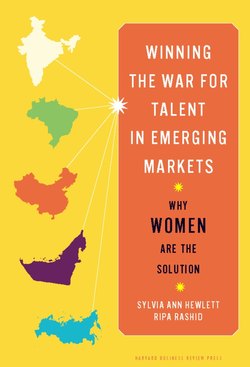Читать книгу Winning the War for Talent in Emerging Markets - Sylvia Ann Hewlett - Страница 3
На сайте Литреса книга снята с продажи.
THE TALENT GAP IN EMERGING ECONOMIES
ОглавлениеThe BRICs' surge represents a pivotal point in the history of globalization: following centuries of dominance by the West, the economic balance of power is steadily shifting towards “the rest.” The enormous leaps in productivity, purchasing power, and consumer demand in the BRIC nations recently led Goldman Sachs's chief economist Jim O'Neill, who coined the term “BRIC,” to predict that their combined GDP could exceed that of the G-7 economies within the next twenty years, with China projected to be the world's largest economy by 2027.5 Some economists put China, now the world's second largest economy, in first place as soon as 2020.6 Others estimate that India, now ranked eleventh, could leapfrog slow-growing Japan into third place in the individual country GDP rankings as early as 2012 (see figure I-1).
In short, emerging markets are now the growth engine of the world.
As the BRICs power out of the global slowdown, the demand for—and shortage of—top talent is more pronounced than ever before. Businesses worldwide are heatedly competing for people who, often for the first time in their lives, “have numerous options and high expectations,” wrote Douglas A. Ready, Linda Hill, and Jay Conger in 2008.7 The problem is especially dire at top ranks. At the very moment when many multinationals are setting aside the ingrained “corporate imperialism” that led them to ignore local managers, they face limited rosters of local talent to promote (see figure I-2).
FIGURE I-1
BRICs will have a larger GDP than the G-7 in less than forty years
Source: Projection data from Goldman Sachs, most recent available as of May 17, 2010.
FIGURE I-2
Global distribution of the talent pipeline
Source: Sylvia Ann Hewlett et al., “The Athena Factor” Harvard Business Review (june 2008); Booz & Company analysis; OECD & UNESCO 2000–2006 (based on availability) Education Database, Tertiary Completion Levels; India, Pakistan, and Peru, 2002 UNESCO Education Database, Tertiary Enrollment reduced, assuming 33% completion rate.
Global talent pool is defined as all individuals around the world who were enrolled in tertiary education (college or university level) in the year 2006.
Melinda Wolfe, Bloomberg's head of professional development, explains the situation: “Bloomberg is now in 146 countries and growing at a rapid pace. We have an urgent need to draw upon a deep pool of talent to deliver excellence.”
It's time to turn the spotlight on highly qualified women.
